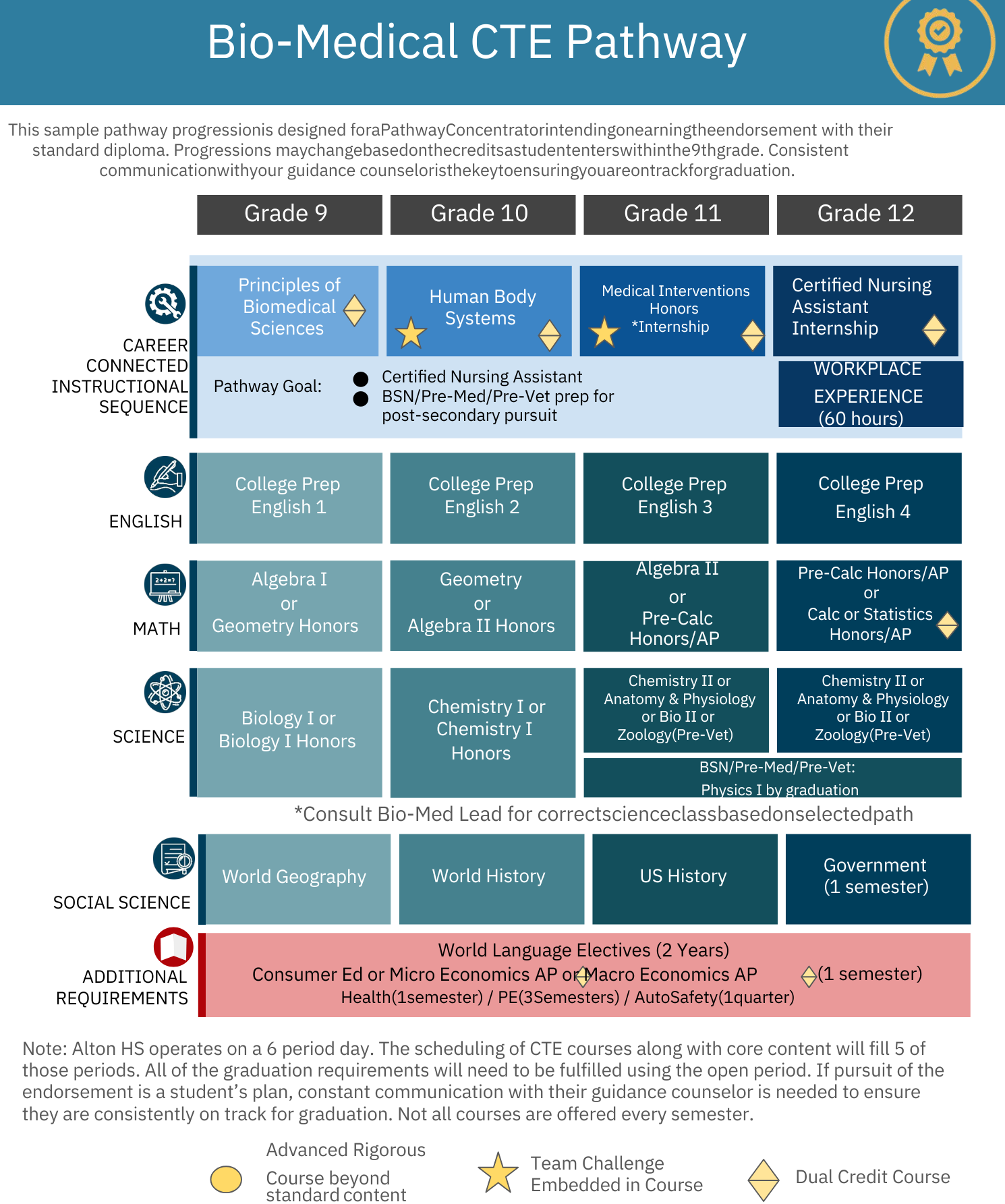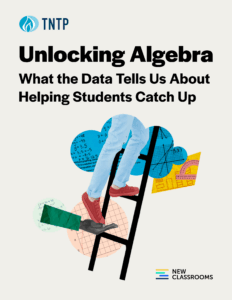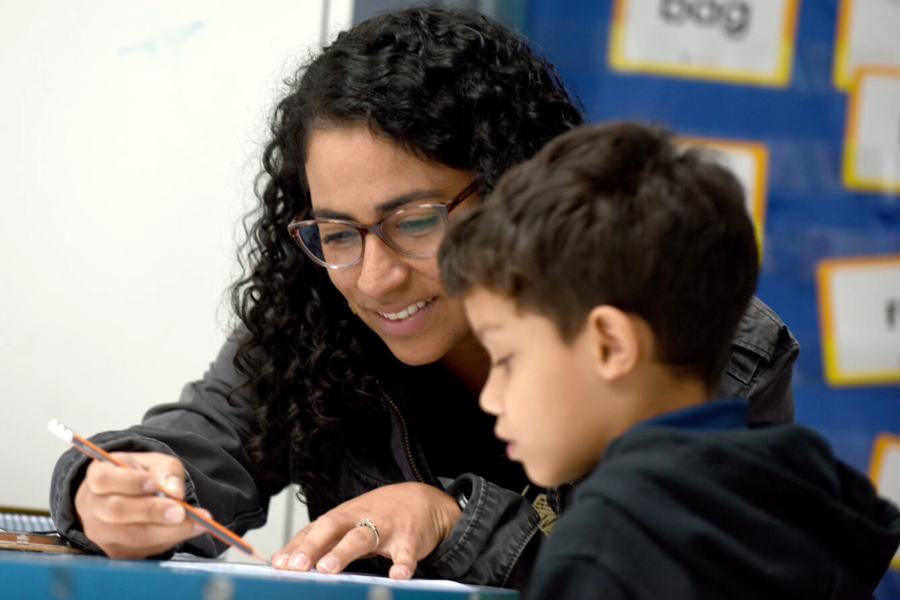Case Study
Strengthening Career Pathways in Alton High School
The Challenge
The Challenge
Alton High School, located in Illinois just across the Mississippi River from St. Louis, has offered trade courses to students for more than 20 years. But as state requirements—and the workforce across the region—evolved, district leaders knew it was time to improve their Career & Technical Education (CTE) program.
Simply adding new courses was not enough. To create more opportunities for all students, Alton High School set out to redesign career-connected learning (CCL), aiming to truly align students’ academic experiences in school with the needs of the current and future workforce. To revamp existing career pathways, Alton needed a new roadmap connecting coursework across all four years of a student’s high school journey and leading to valuable career opportunities.
Career-connected learning (CCL) is an integrated approach of linking academic learning in the classroom to real-world work experiences throughout PK-12. Bridging the divide between siloed education and workforce systems, TNTP helps districts weave together core academics, technical skills, and the durable skills sought by employers like leadership, communication, and critical thinking.
Superintendent Elaine Kane’s vision for CCL in Alton was clear: to help all students gain the skills, knowledge, and experiences they need for thriving careers after graduation. She partnered with TNTP to help the district realize that vision, leveraging TNTP’s national expertise in the PK-12 ecosystem and experience facilitating complex projects with broad stakeholder support. As external partners, TNTP’s team of consultants focused on bringing this vision to life, creating a structured process that generated momentum, ensured accountability, and moved the project forward efficiently.
Insight + Courage + Action
Rather than imposing a generic set of ideas about career readiness onto Alton’s curriculum, TNTP listened to Alton leaders and brought together voices from different sectors across the community. Together, they developed a shared understanding of what students need to thrive in the workforce, which skills local industries were seeking, and how Alton teachers could link academic learning to real-world work experiences.
Phase 1: Analyzing the Local and Regional Career Landscape
TNTP’s consulting team first conducted comprehensive research both in and outside of school to develop an Alton “community snapshot.” This landscape analysis helped TNTP better understand the needs of the local workforce and customize career pathways to Alton’s specific students.
Diving deeply into labor market data in nearby St. Louis and the surrounding region of Madison County, Illinois, TNTP looked for positions among Alton’s industry partners that were high-wage, high-skill, and high-demand—and that matched students’ interests. During this phase, TNTP synthesized viewpoints from multiple stakeholders, including:
- Alton teachers, students, and families
- Local business leaders and industry partners
- County officials with in-depth knowledge of state requirements
Phase 2: Co-Creating a Community-Driven Vision
To collaboratively update existing CTE programs, Alton and TNTP convened a broad set of community stakeholders, including students, parents, educators, industry professionals, business leaders, district staff, and community college coordinators. Advisory committee guidance was critical to the process of designing career pathways that benefit Alton’s learners and prepare them to thrive in a variety of roles with industry partners.
Inviting all stakeholders to the table not only enhanced the district’s vision for career pathways; it also established tightly woven support networks, developed buy-in at all levels of engagement, and fostered cross-sector relationships. TNTP and Alton asked the right questions, listened deeply, and learned from a range of perspectives to rally the community around a common goal—one conversation at a time.
Phase 3: Redesigning STEAM/CTE Pathways
Finally, with TNTP’s support, Alton renovated and fortified five key STEAM (science, technology, engineering, arts, and mathematics) pathways in the diverse fields of engineering, cyber security, automotive technology, biomedicine, and architectural design.
TNTP created one-page programs of study as guides for students to identify which courses throughout grades 9-12 they should take to progress along a given pathway and when they can explore internships and other workplace experiences. The programs of study also show which courses are dual credit, where students earn high-school and postsecondary course credit simultaneously.
For example, the Bio-Medical CTE Pathway supports a student’s goal of becoming a Certified Nursing Assistant or pursuing a Bachelor of Science in a Nursing, Pre-Med, or Pre-Vet program. By the end of their senior year, students in this pathway will complete 60 hours of workplace experience, which gives them an edge in a competitive job market. Upon graduation, they will earn a Health Sciences and Technology endorsement alongside their standard diploma.

Because students can access internship opportunities during school hours and year-round, students who work outside of school don’t have to give up their paying jobs to gain valuable apprenticeship experience. This was a critical way to make career exploration and work-based learning experiences accessible to all students.
Furthermore, the district collaborated with their industry partners to create an internship handbook that met the needs of both the school system and participating partners, including Alton Steel, Alton Memorial Hospital, and SMS Engineers.
Results
Ultimately, this customized, community-driven process laid a foundation for Alton’s students to follow defined pathways through high school so they can connect core academics to real-world experiences on their way toward high-skill, high-demand, and high-paying careers. The changes that emerged from this collaboration included:
- Opportunities for students to earn industry credentials, state-recognized endorsements, and work-based learning experiences throughout high school
- Updated course offerings driven by student interest and feedback
- A new vision for the CTE department
- Deepened community partnerships, a more structured internship process, and the creation of an internship handbook
“We’re already seeing communication skills, collaboration skills, and the ability to work on a team to produce an outcome,” said Superintendent Kane. “Even if students are gaining experience in a field they don’t pursue, they’re developing skills that are transferable.”
Next Steps
In the upcoming year, TNTP and Alton plan to expand access to work-based learning opportunities, streamline the processes now in place, and increase enrollment in career pathways. The next phase will infuse CCL into middle schools, so counselors, teachers, students, and families are better informed about career pathways before high school.
With a strong CCL foundation, all Alton High School students can learn from relevant, hands-on educational experiences that transcend the walls of the classroom and prepare them to thrive in college and careers.
Get in touch with TNTP to learn about how we can help your school or district strengthen career-connected learning pathways.
About Our Funder
An innovative cross-sector collaboration between General Motors (GM) and TNTP, now in its fourth year, helps school systems like Alton Community School District invest in STEAM education (science, technology, engineering, arts, and mathematics) as a key focus area for social impact. With the aim of growing the talent pipeline, GM directs philanthropic funding through STEAM education to support foundational multi-disciplinary skillset development, increasing access to STEAM resources for students and educators, and enhancing young people’s exploration, participation, and success in STEAM careers.
Stay in the Know
Sign up for updates on our latest research, insights, and high-impact work.
"*" indicates required fields
Read Next

Blog Post |
First-Grade Literacy is Skyrocketing in Rural Missouri – Here’s Why
Read how instructional coaching, coherent support, and the science of reading are accelerating early literacy in rural Missouri.

Blog Post |
Designing Career-Connected Learning That Starts Early and Builds for Life: Highlights from the Field
Explore how schools are reimagining career-connected learning—from early exposure to high school immersion—to equip students for the future.

Blog Post |
What Is Career-Connected Learning—and Why Does It Matter?
Discover how career-connected learning links academics and real-world skills to prepare students for meaningful, future-ready careers.

Publication |
Unlocking Algebra
Success in mathematics has long-term effects on young people’s lives. Learn more about how schools can integrate Tier 2 supports into Tier 1 instruction for real time acceleration.

Blog Post |
America’s Educational Crossroads
While our nation's leaders wrestle with questions of governance, America's young people are in crisis.

A teacher leads a one-on-one reading session focused on strategy and engagement.
About TNTP
TNTP is the nation’s leading research, policy, and consulting organization dedicated to transforming America’s public education system so that every young person thrives.
Today, we work side-by-side with educators, system leaders, and communities across the nation to reach ambitious goals for student success.
Yet the possibilities we imagine push far beyond the walls of school and the education field alone. We are catalyzing a movement across sectors to create multiple pathways for young people to achieve academic, economic, and social mobility.